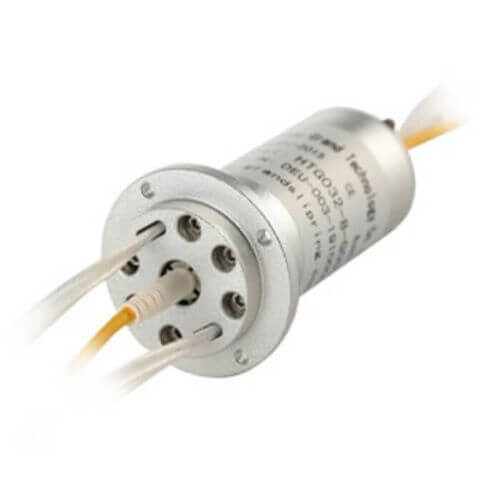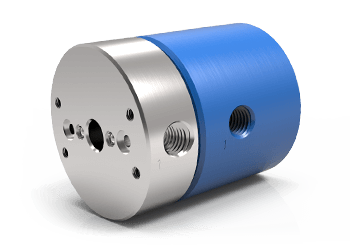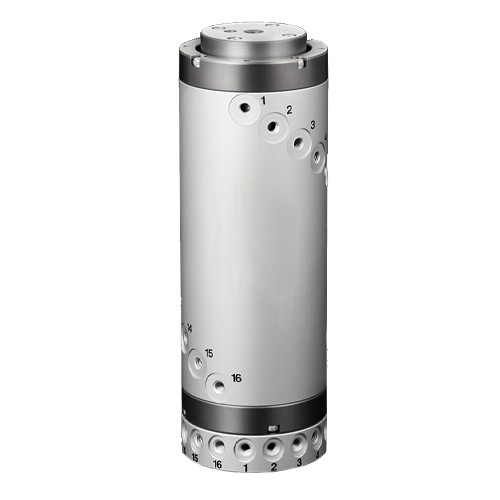In the technological sphere, the backbone of many systems is the reliable and efficient transmission of signals. The microwave rotary joint plays a pivotal role in achieving this. Also known as a rotary coupler, it allows for the seamless transmission of microwave signals between stationary and rotating components in various systems, ranging from communication devices to radars.
Built with an ingenious mechanism, the microwave rotary joint provides a precision electrical interface improving the overall dynamics of signal transmission. Its high reliability in varied environmental conditions makes it an indispensable part of major technological setups. This guide delves into the world of microwave rotary joints, providing a comprehensive insight into their types, key features, and multitude of applications.
What are Microwave Rotary Joints?

In the world of telecommunications and radar systems, components like microwave rotary joints often work behind the scenes, carrying out functions that may go unnoticed but are absolutely critical for operation. Simply put, a microwave rotary joint is a specialized device designed to transmit microwave signals between movable and stationary parts of a system.
Microwave rotary joints, also known as radio frequency (RF) rotary joints, act as the interface in these systems, permitting the transfer of high-frequency signals from stationary to rotating parts without hindering the mechanical performance of the system. Imagine a radar system with a rotating antenna, the signals must smoothly transmit between the stationary base and the spinning top. This is where our unsung hero, the microwave rotary joint, comes into play.
To visualize the role these joints play, liken a microwave rotary joint to a bridge permitting smooth traffic between two towns, without which connectivity would be disrupted. The rotary joint ensures that microwave communication between two parts of a system (e.g., communication devices, radar technology, rotating antennas) is maintained ceaselessly, even when one part is in motion relative to the other.
Resilient and efficient, microwave rotary joints can perform optimally even in variable environmental conditions, making them a cornerstone for multiple high-end, critical applications in defense, aerospace, satellite communication, and civilian contexts. Their unique ability to facilitate precise, reliable, and unwavering signal transmission cements their value and importance in these systems.
From this perspective, delving deeper into the types, features, and applications of microwave rotary joints becomes not only fascinating but also essential to understanding their role in bolstering the backbone of modern communication and radar systems.
Microwave Rotary Joints: Types
Microwave Rotary Joints are classified into several types depending on the mode of signal transmission and the specific applications they are designed for. Two of the most prominent types include Coaxial Rotary Joints and Waveguide Rotary Joints. Each type is unique in its structural design, signal-handling capabilities, and suitability for various applications.
Coaxial Rotary Joint

Coaxial Rotary Joints, also commonly referred to as RF Rotary Joints, are arguably the most commonly used type in numerous applications. These types of rotary joints employ coaxial transmission lines that facilitate the transfer of electromagnetic signals. This design is well-regarded for its low insertion loss—meaning the signal does not lose significant power as it moves through the joint—and its substantial power handling capabilities. Thus, coaxial rotary joints are often a preferred choice for applications where power efficiency is paramount.
Waveguide Rotary Joint
On the other hand, Waveguide Rotary Joints function by connecting waveguide transmission lines. This physical structure provides a channel that allows electromagnetic waves to propagate through it. Because of their specific design, waveguide rotary joints are perfect for applications that deal with high-frequency signals. They yield less signal loss compared to their coaxial counterparts and can handle higher power, making them a desirable component for high-frequency and high-power applications.
Comparative Analysis
So how to choose between these two types? It largely depends on the requirements of the specific application. Coaxial Rotary Joints win over in terms of power handling capabilities and are an excellent choice for a wide range of uses. Waveguide Rotary Joints, in contrast, stand out in high-frequency applications due to their lower signal loss and high power handling.
Choosing the right rotary joint influences the performance, efficiency, and longevity of the systems they are incorporated into. Hence, the understanding of what each type of Microwave Rotary Joint is capable of, is key to deriving the maximum benefit from them and enhancing the overall efficacy of the systems.
Microwave Rotary Joints: Features and Characteristics
Optimizing the function and efficiency of a microwave system requires a deep understanding of the various features and characteristics of its components—namely the Microwave Rotary Joints. In this section, we delve into some of these crucial attributes.
VSWR and Insertion Loss
In an ideal world, a microwave signal would pass through a rotary joint without any form of impedance or loss. However, in reality, factors such as reflections caused by impedance mismatches within the joint can create what’s known as a standing wave, measured by the Voltage Standing Wave Ratio (VSWR).
VSWR is an essential parameter to measure the efficiency of a microwave rotary joint. A lower VSWR indicates minimal reflections and, hence, an efficient transfer of power through the joint. On the other hand, a higher VSWR hints at potential inefficiencies and signal loss.
Speaking of loss brings us to Insertion Loss. It measures the signal loss resulting from the insertion of a rotary joint into the microwave transmission line. A low insertion loss translates into minimal power reduction or even negligible signal degradation—an essential feature for high-stakes applications that require maximum signal integrity.
Frequency Ranges
Another critical feature of a microwave rotary joint pertains to the range of frequencies it has been designed to accommodate. Different rotary joint models are designed to cater to distinct frequency ranges, from minor frequency bands to ultra-wide ones. This attribute is critical in determining whether a joint is suitable for specific applications.
Selecting a microwave rotary joint with an acceptable frequency range can help ensure that the signal being transmitted maintains its integrity and quality. Furthermore, a broad frequency range can allow for versatile uses across varied applications, while a narrow-band rotary joint is more suitable for specific, targeted uses.
It is key to consider both the VSWR, insertion loss and the frequency range of a microwave rotary joint while selecting one for practical application. These metrics combined give us an idea of performance and efficiency and enable us to make the right choice for varied application requirements.

Microwave Rotary Joints: Applications
Given their unique capabilities to facilitate seamless transmission of RF signals between rotating and stationary components, microwave rotary joints have seen widespread use in various industries and applications.
Usage in Radar Systems

Radar systems largely depend on the successful transmission of microwave signals to function properly. And this is precisely where microwave rotary joints come into play. Radar antennas frequently require rotational movement; hence, the rotary joint provides an efficient transmission pathway for the microwave signals between the rotating antenna and the stationary base. Their ability to handle varying environmental conditions further accentuates their usage in these systems, often used in navigation, military, and meteorological applications.
Usage in Satcom Systems
Satellite communication (Satcom) systems also leverage the critical attributes of microwave rotary joints. Satcom systems have to deal with the transmission of high-frequency signals while the satellite equipment could be rotated or repositioned. RF rotary joint prove valuable, ensuring unimpeded transmission of high-frequency signals, maintaining the fidelity of the feedback, and supporting real-time data transfer requirements.
Usage in Antenna Systems
Whether it is for broadcasting, reception, or any other application, antenna systems greatly depend on microwave rotary joints. Antennas often need to be repositioned to maintain optimal reception or transmission. During these movements, the rotary joint comes into action—seamlessly connecting the stationary and moving parts of the antenna system without disrupting the signal transmission. This ability significantly enhances the operational efficiency of antenna systems.
In conclusion, whether it is radar systems, satellite communications, or antenna systems, the prevalence of microwave rotary joints is omnipresent. Their unparalleled abilities—for maintaining a seamless flow of signals while compensating for mechanical movements—make them indispensable in these realms and beyond.
Conclusion
Microwave Rotary Joints, integral in a gamut of essential systems, can be broadly categorized into Coaxial Rotary Joint and the Waveguide Rotary Joint; each type’s special attributes make them suitable for different applications. Key features like VSWR, insertion loss, and frequency range determine their operational efficiency in a microwave system. While a low VSWR and insertion loss ensure efficient power transfer with minimal power reduction, appropriate frequency ranges help maintain signal integrity and quality.
These rotary joints find prominent use across radar systems, satellite communications, and antenna systems. Their unique capacity to manage seamless transmission between stationary and rotating components is critical for these systems’ performance. Hence, for optimal implementation of solutions, understanding their types, features, and application areas is crucial. Hence, Microwave Rotary Joints, with their varied types, characteristics, and wide application scope, significantly contribute to the efficiency and performance of numerous systems.
FAQ about Microwave Rotary Joints
Understanding the conception and practicality of Microwave Rotary Joints may bring about several questions. In this section, we’ll endeavor to address some common inquiries on the topic.
Q: How do Microwave Rotary Joints work?
A: Microwave Rotary Joints work by facilitating an interface for unimpeded signal flow between rotating and stationary components in a system. They enable a continuous electrical connection while compensating for the physical rotation of parts.
Q: What factors should I consider when choosing a Microwave Rotary Joint?
A: When choosing a Microwave Rotary Joint, you should consider several factors. These include the joint’s power handling capabilities, its VSWR (Voltage Standing Wave Ratio), Insertion Loss, and the frequency range it supports. Moreover, your selection should align with your specific system requirements and the intended application.
Q: What is the purpose of the VSWR in a Microwave Rotary Joint?
A: VSWR in a Microwave Rotary Joint measures the efficiency of the device. In simpler terms, a lower VSWR indicates minimal reflections hence efficient power transfer through the joint, whereas a higher VSWR denotes potential inefficiencies and signal loss.
Q: Where are Microwave Rotary Joints used?
A: Microwave Rotary Joints have a broad range of applications in different industries. They are used in radar systems, satellite communications, antenna systems, and other areas where there is a need for a seamless flow of signals while managing mechanical movements.
The above content will help you gain a deeper understanding of Microwave Rotary Joints, their operational principles, crucial features, and their importance in different applications.
See What We Can Do

